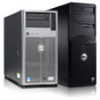Dell PowerEdge XL 5133-4 Dell PowerEdge FTOS Command Line Reference Guide for - Page 249
diag stack-unit, hardware watchdog
 |
View all Dell PowerEdge XL 5133-4 manuals
Add to My Manuals
Save this manual to your list of manuals |
Page 249 highlights
diag stack-unit Run offline diagnostics on a stack unit. Syntax diag stack-unit number {alllevels | level0 | level1 | level2 [verbose no-reboot] | terminate | interactive {test } number alllevels level0 level1 level2 verbose no-reboot terminate interactive Enter the stack-unit number. Range: 0 to 5 Enter the keyword alllevels to run the complete set of offline diagnostic tests. Enter the keyword level0 to run Level 0 diagnostics. Level 0 diagnostics check for the presence of various components and perform essential path verifications. In addition, they verify the identification registers of the components on the board. Enter the keyword Level1 to run Level 1 diagnostics. Level 1 diagnostics is a smaller set of diagnostic tests with support for automatic partitioning. They perform status/self test for all the components on the board and test their registers for appropriate values. In addition, they perform extensive tests on memory devices (e.g., SDRAM, flash, NVRAM, EEPROM, and CPLD) wherever possible. There are no tests on 10G links. At this level, stack ports are shut down automatically. Enter the keyword level2 to run Level 2 diagnostics. Level 2 diagnostics is a full set of diagnostic tests with no support for automatic partitioning. Level 2 diagnostics are used primarily for on-board loopback tests and more extensive component diagnostics. Various components on the board are put into loop back mode, and test packets are transmitted through those components. These diagnostics also perform snake tests using VLAN configurations. You must physically remove the unit from the stack to test 10G links. Enter the keyword verbose to run the diagnostic in verbose mode. Verbose mode gives more information in the output than standard mode. Enter the keyword no-reboot to avoid automatic rebooting of the chassis after completion of diagnostic execution. Generally, this option is never used because if you run the diagnostic once again without rebooting the chassis, it may cause an issue with the diagnostic results. Enter the keyword terminate to stop the execution of the level diag that is already started using the diag stack-unit command. Once this CLI is issued, syslogs indicating the termination of the diag test is displayed. The diag results for the executed tests are stored in the flash directory (TestReport-SU-X.txt). Enter the keyword interactive to run some individual diag tests such as POWERLEDTEST, STATUSLEDTEST and so on. The help option under the interactive command displays the list of tests that can be run. Defaults none Command Modes EXEC Privilege Command History Version 8.3.17.0 Supported on M I/O Aggregator hardware watchdog Set the watchdog timer to trigger a reboot and restart the system. Syntax hardware watchdog Defaults Enabled Debugging and Diagnostics | 247















